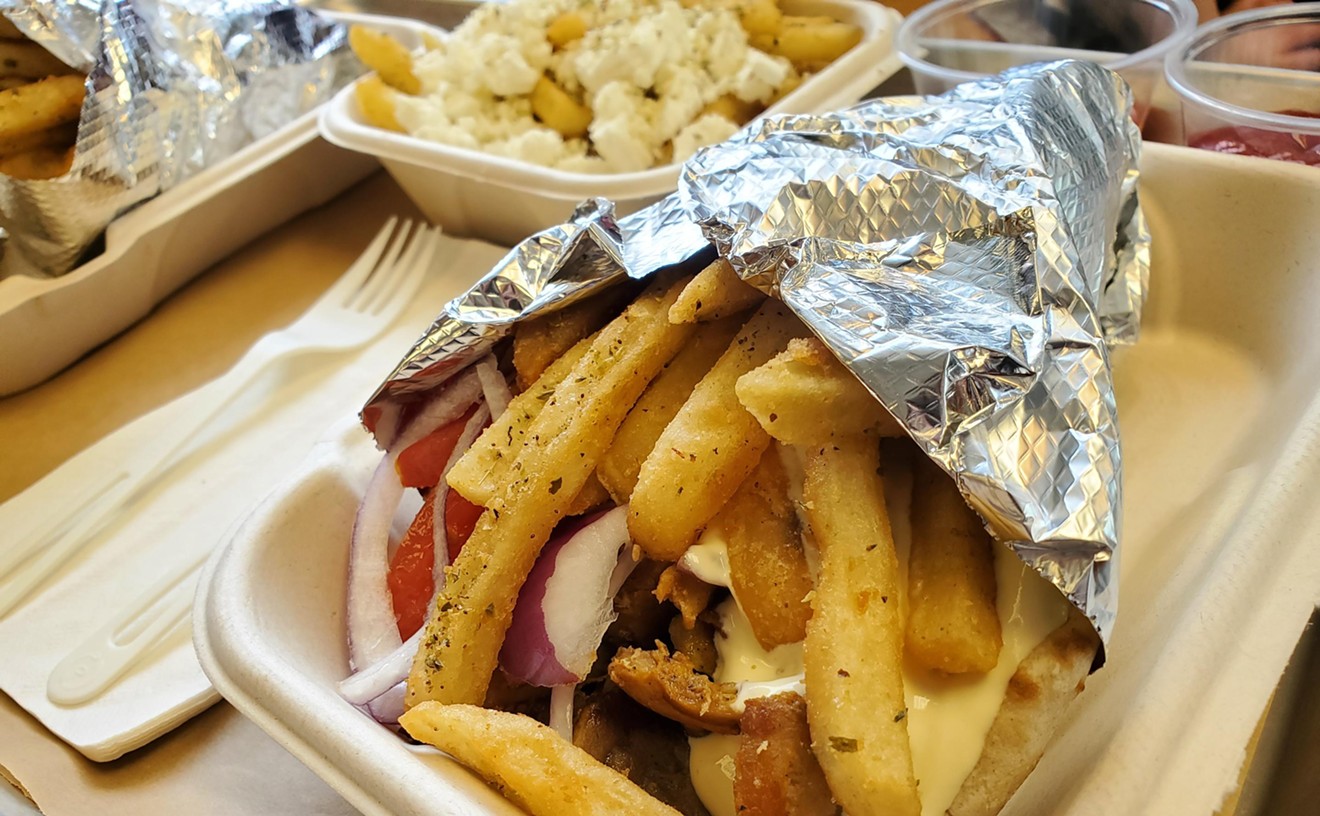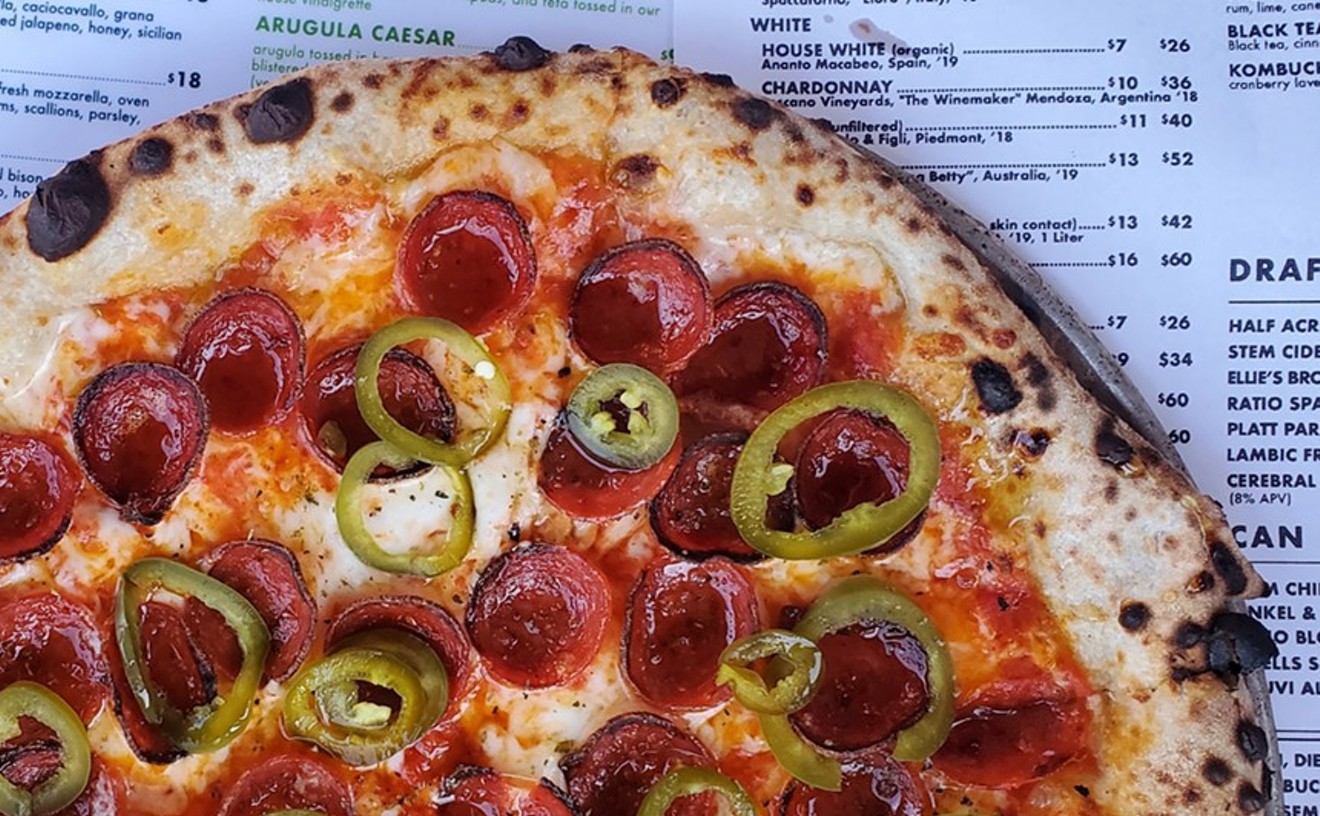Not only is WaterCourse moving into a bigger space -- the former New York on 17th location, at 837 East 17th Avenue -- but owner Dan Landes has struck a deal to buy it. "You've got to own your own building," he says. "I've learned that. Because if you don't own your place, you're a victim to whatever someone wants to do with it -- Monkey Bean being the latest casualty of that." In August, the owners of Monkey Bean -- a late-night gathering spot at 2470 Broadway for the terminally caffeine-addicted -- decided to throw in the kitchen towel after their new landlord jacked the Bean's rent by like 9,000 percent.
"Owning my own building is a huge thing," Landes continues. And if all goes according to plan, Denver will not be without WaterCourse for even a single day: He wants to close the original space one night just before Thanksgiving and then open in the new digs the next morning. The new WaterCourse will mimic the old one in terms of menu and style, and Landes hopes to add a large selection of grab-and-go box lunches as well as catering contracts.
The old 13th Avenue spot won't be dark long. On January 1, Landes will debut another new project, City, O' City, at that address. City will be an art-nouveau, Parisian-style coffeehouse and "conversation bar," he says, a place with no TVs but great beer and wine, artisan cheeses, WaterCourse pastries and simple, cutting-board foods. All of that food will be vegetarian, of course, and the pastries will come from the WaterCourse bakery, which will continue (for now, at least) operations in the space next door.
Landes is banking on City catching on with the crowds heading to the Denver Art Museum addition, while still holding on to neighborhood business. "I'm playing into the idea that if you're in Paris or Madrid, there's always some little cafe or something near the museums where you can get something to eat or drink before you go, or a place to come to after," he explains.
Frankly, Landes seems a little surprised by his own expansion plans. "Who would've guessed, right?" he asks, laughing into the phone. "A slack-ass motherfucker like meŠ"
Me and Harold McGee: A couple of months ago, I was tearing through the stacks at the Denver Public Library's annual book sale, and what should I run across but a battered hardcover copy of James Beard's How to Eat (and Drink) Your Way Through a French (or Italian) Menu, from 1971. As he describes in the introduction (most of which I skipped because, honestly, Beard has never been one of my favorite food writers), the book was originally conceived as a guidebook for early American gastronauts traveling to France or Italy on journeys of culinary discovery. At the time, most (if not all) of the restaurants in those two countries actively discouraged tourists from settling anywhere long enough to dine, and the only menus that were translated were those at large hotel restaurants. And so, faced with a menu that included, say, la tête de veau dans la sauce gribiche, most tourists without a command of kitchen French wouldn't know that to order it would mean spending the night eating boiled calf's head, sliced thin, with tongue and mustard.
Unless, that is, they had a copy of Jimmy's book in their bag, because in it, he exhaustively defines, describes and gives brief notes on, well, everything. Seriously, everything. Everything that could possibly be found on a menu, divided by course, often broken down by region. He does appetizers and antipasti, wines and cheeses, meat, fish and foul, even dessert (though here his listing is a little light). And he goes off on the occasional terse jag when describing flavors or proper presentation.
That's why this book is such a cool history lesson for cooks. It describes -- in exactly the right amount of words -- precisely what a proper bearnaise ought to be composed of, how a Mornay sauce is used, how to cut a pig's face for service and what wine would go best with it. He talks lovingly of trotters and snouts, of charcuterie and cheese, and essentially offers a bootstrap education in French (and Italian) classicism for any cook (like me) who never got the opportunity to go to school or to France himself.
On that same topic, I was recently listening to an interview with Bill Buford -- the guy from the New Yorker who sold his ass onto the line at Mario Batali's Babbo (and elsewhere) as research for his book Heat -- in which he said this: "I found two kinds of people there: those who had gone to culinary college, and the few who had not -- including Mario himself. What you needed to be a cook, [Mario would] insist, was not schooling, but working -- in a proper top-flight kitchen -- provided that when you got home, you read your McGee."
That's Harold McGee, author and professor and dedicated amateur food scientist, who in 1984 published the massive, 700-page On Food and Cooking, which -- in its own bizarre way -- contains everything any working cook could ever need or want to know about the science (and history and uses and creation and chemistry and psychological underpinnings) of all things culinary. A couple of years ago, McGee came out with another version of On Food, this one almost 900 pages. And both Buford and Batali are firmly of the opinion that this guy -- formally educated or not -- is an indispensable resource for chefs.
I'm the same way with Beard. I don't love him. I find his essays occasionally impossible to read. And yet his books are like small hardback and cloth-bound boxes meant for the containment of very large and wide minds. Like McGee, he's a guy who -- through his obsession and attention -- does more than just chronicle or categorize food, putting it into a frame of reference that careful cooks can use to trace back all of today's weirdest and wildest nouvelle cookery.
So can you be a professional chef without having gone to C-school? Absolutely. But I'm with Buford and Batali on this one: You can cook without a diploma (and may even be a better cook), but not without a well-stocked book shelf. Read your Beard, your McGee (and your Escoffier, your antique Betty Crocker, your Julia Child and White and Keller and Michael Ruhlman and on and on), and you'll know, beyond question, that the calf's head should always be served with mustard, the ducks always split across the back, and what wine to serve with pig face. (It's pouilly fumé, by the way.)
Leftovers: As if the guys at Frasca needed anyone else telling them how brilliant they are, chef/ partner Lachlan Mackinnon-Patterson will be named one of John Mariani's "Four Chefs to Watch" in Esquire's November food issue. (Not surprisingly, he's right beside former co-worker and French Laundry veteran John Fraser, now at Compass in New York.) This means that in the past couple of months, either Frasca itself or the guys at Frasca have collected a Top Fifty Restaurants nod from Gourmet (Frasca was 33), a "Hot List" bump from Conde Nast Traveler (the only Colorado restaurant to get one this time), a "Rising Star" nomination from the James Beard House, and now a quick, literary hand job from Mariani. Not to be discounted, I also said the place was pretty good in last week's Second Helping.










